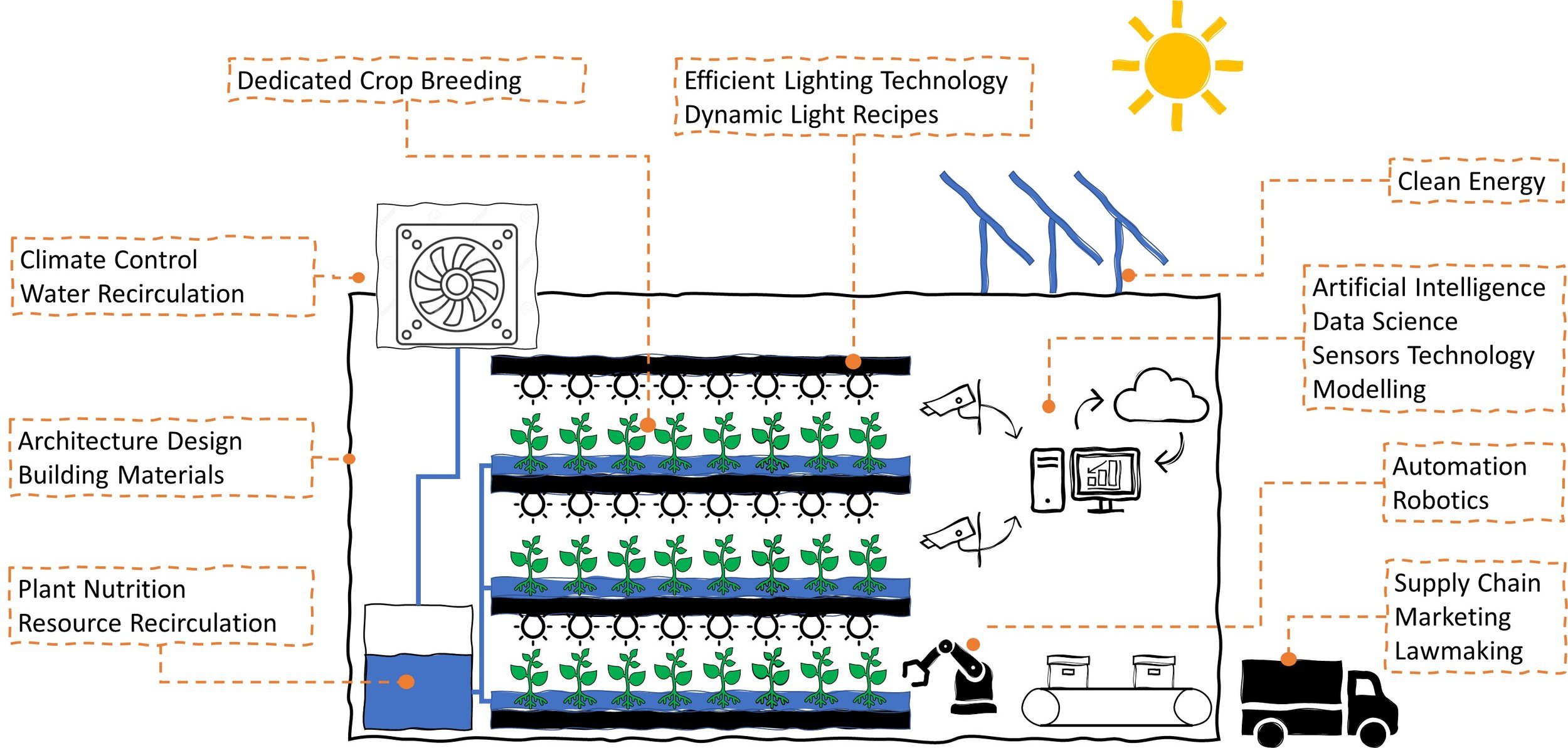S. H. van Delden, M. SharathKumar, M. Butturini, L. J. A. Graamans, E. Heuvelink, M. Kacira, E. Kaiser, R. S. Klamer, L. Klerkx, G. Kootstra, A. Loeber, R. E. Schouten, C. Stanghellini, W. van Ieperen, J. C. Verdonk, S. Vialet-Chabrand, E. J. Woltering, R. van de Zedde, Y. Zhang & L. F. M. Marcelis
Abstract
Vertical farming can produce food in a climate-resilient manner, potentially emitting zero pesticides and fertilizers, and with lower land and water use than conventional agriculture. Vertical farming systems (VFS) can meet daily consumer demands for nutritious fresh products, forming a part of resilient food systems—particularly in and around densely populated areas. VFS currently produce a limited range of crops including fruits, vegetables and herbs, but successful implementation of vertical farming as part of mainstream agriculture will require improvements in profitability, energy efficiency, public policy and consumer acceptance. Here we discuss VFS as multi-layer indoor crop cultivation systems, exploring state-of-the-art vertical farming and future challenges in the fields of plant growth, product quality, automation, robotics, system control and environmental sustainability and how research and development, socio-economic and policy-related institutions must work together to ensure successful upscaling of VFS to future food systems.
Link to the publication (open access)
